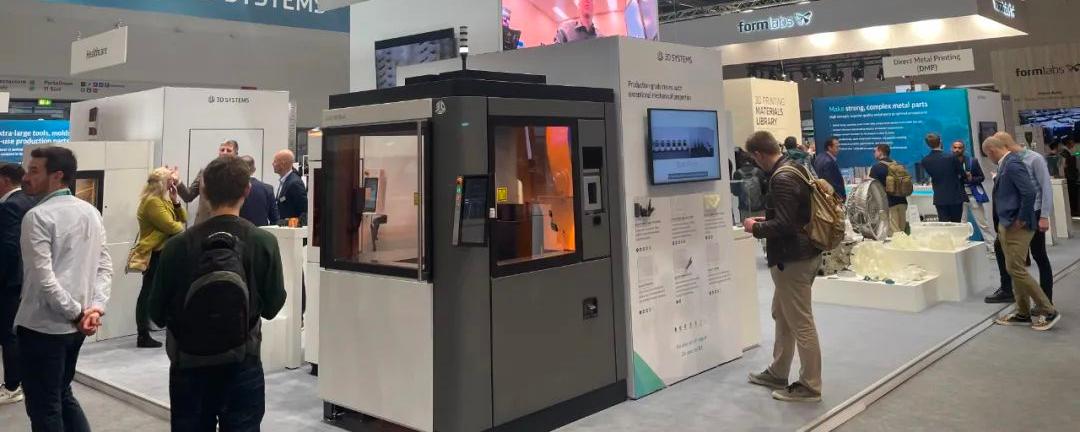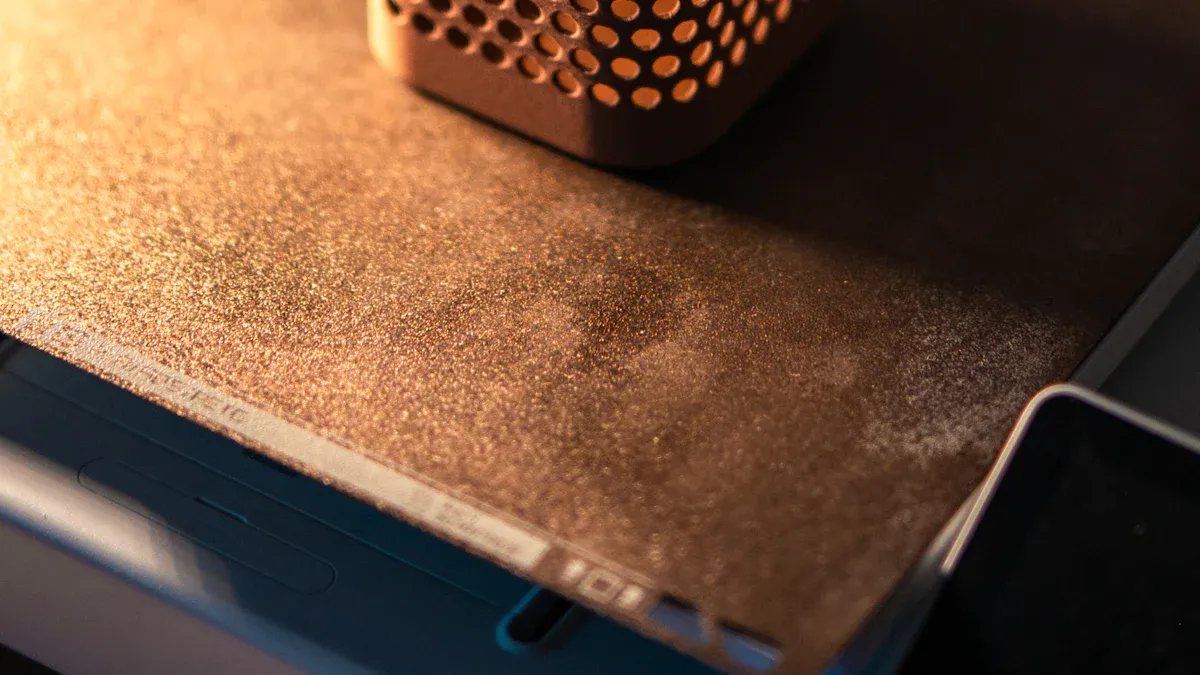How 3D Wax Models Improve Precision Casting Efficiency

Manufacturers are increasingly adopting 3D wax printtechnology to enhance efficiency in Precision Casting. By utilizing 3D wax model print for precision casting, they achieve exceptional accuracy while significantly reducing production times. Processes that previously required weeks can now be completed in mere hours. With3D print for precision casting, foundries can produce Casted Parts within 24-48 hours, lowering costs and eliminating the need for tooling storage.
Precision Casting and Its Role in Manufacturing
Defining Precision Casting
Precision casting, also known as Investment Casting, is a manufacturing process that creates highly detailed and accurate components. It involves creating a wax pattern, which is then coated with a ceramic shell. Once the wax is melted away, molten metal is poured into the mold to form the final part. This method is ideal for producing complex shapes that require tight tolerances and smooth finishes.
Precision casting plays a vital role in industries like automotive, aerospace, and medical. A closer look at the market share highlights its significance:
| Industry Sector | Market Share (%) |
|---|---|
| Automotive | 40 |
| Aerospace | 30 |
| Medical | 15 |
| Other | 15 |

The growing demand for precision cast components stems from advancements in casting techniques and materials. Emerging markets are also driving this growth, despite challenges like limited access to specialized raw materials.
Importance of Accuracy in Manufacturing
Accuracy is the backbone of modern manufacturing. It ensures that components meet exact specifications, reducing waste and improving efficiency. For example, an AI-powered statistical process control (SPC) system can predict yield issues with 92% accuracy, leading to a 15% increase in overall yield. This kind of precision saves costs and minimizes production delays.
Effective quality control programs also play a critical role. Poor quality control often results in higher scrap rates and increased labor costs due to rework. On the other hand, maintaining high accuracy reduces customer returns and enhances brand reputation. Manufacturers using 3D wax model print for precision casting benefit from this accuracy, as the technology allows for intricate designs and consistent results.
Challenges of Traditional Wax Pattern Methods
Limitations in Precision and Consistency
Traditional wax pattern methods often struggle to meet the precision and consistency demanded by modern manufacturing. Rainer Sabisch highlights that these methods rely on time-consuming and costly wax tools, which lack flexibility. This makes it difficult to achieve the intricate designs and tight tolerances required for complex components.
The process itself involves several manual steps, each introducing potential errors:
- A craftsman creates a metal ring sample by hand.
- The sample is coated to form a silicon mold.
- Liquid wax is injected into the mold to produce a wax ring.
- The process is repeated for additional wax patterns.
These steps not only slow down production but also increase the chances of dimensional inaccuracies. Research shows that traditional methods face challenges like maintaining precise dimensions, handling complex designs, and avoiding technical issues such as ceramic shell cracking or wax expansion during casting. These limitations make it harder for manufacturers to deliver consistent results.
Time and Cost Inefficiencies
Traditional wax casting methods are notorious for their inefficiency in terms of time and cost. For instance, creating molds for pattern manufacture is both time-intensive and expensive, making it viable only for large-scale production. A case study on rapid investment casting revealed that traditional methods often take weeks to complete, significantly delaying project timelines.
Another study found that conventional machined molds face geometry constraints and require substantial time to produce. In contrast, 3D printing offers a faster, tool-less alternative that reduces costs and enhances design freedom. Additionally, traditional methods can cost tens of thousands of dollars and take up to 12 weeks, whereas 3D printing eliminates the need for tools and accelerates production.
These inefficiencies also limit the number of design iterations, stifling innovation. Startups and small businesses, in particular, struggle with the high costs of creating new molds for each design change. Flaws in traditional methods further add to expenses, as manufacturers must spend extra time and resources on corrections. By adopting 3D wax model print for precision casting, manufacturers can overcome these challenges, saving both time and money.
Benefits of 3D Wax Model Print for Precision Casting

Improved Accuracy and Complex Geometries
3D wax model print for precision casting excels in delivering unmatched accuracy and enabling the creation of intricate designs. Traditional methods often struggle with complex geometries, but 3D printing overcomes these challenges effortlessly. For instance, dental prostheses crafted using 3D wax printing achieve exceptional precision, replicating a patient’s dental anatomy with remarkable detail. This ensures a better fit and improved functionality.
The technology also allows manufacturers to produce highly detailed models using specialized wax materials. These models are essential for precision casting, as they ensure consistent results and reduce the risk of errors. Additionally, 3D wax printing supports design freedom, enabling engineers to innovate without the constraints of traditional methods.
| Aspect | Traditional Wax Pattern Methods | Advanced 3D Wax Model Print Techniques |
|---|---|---|
| Accuracy | Exceptional accuracy and surface finish | Mechanical properties minimally influenced by printing angles and layer height |
| Design Complexity | Faces challenges with complex designs | Offers design freedom and innovation |
Faster Production and Reduced Lead Times
Speed is a game-changer in modern manufacturing, and 3D wax model print for precision casting delivers on this front. Unlike traditional methods, which require days or even weeks for mold adjustments, 3D printing enables rapid iterations. Engineers can modify and print new models within hours, significantly reducing production cycles.
This technology also accelerates development timelines, allowing manufacturers to bring products to market faster. In-house 3D printing eliminates the need for external tooling, further cutting down lead times. By streamlining the process, manufacturers can focus on innovation and meet tight deadlines with ease.
- 3D printing allows for rapid prototyping and faster production cycles.
- Engineers can adjust designs and print new models in hours, compared to days with traditional methods.
- The technology enhances overall production speed, enabling quicker market entry.
Cost Savings and Material Efficiency
Cost efficiency is another major advantage of 3D wax model print for precision casting. Traditional methods often involve high material waste and labor costs, but 3D printing minimizes these expenses. A techno-economic analysis highlights the cost-effectiveness of additive manufacturing, particularly for low utilization rates. Technologies like DLP offer the best performance, reducing production costs and improving material efficiency.
Moreover, 3D printing eliminates the need for expensive tooling, making it a viable option for small-scale production. By reducing waste and optimizing resources, manufacturers can achieve significant savings while maintaining high-quality standards. This makes 3D wax printing an ideal choice for industries looking to balance cost and performance.
- Additive manufacturing technologies like DLP and SLA reduce material waste.
- Increasing labor costs enhance the competitiveness of 3D printing over traditional methods.
- The process is cost-effective, especially for small-scale or low-volume production.
Applications of 3D Wax Models in Precision Casting

Aerospace Industry Innovations
The aerospace sector demands precision and efficiency, making 3D wax model printing a game-changer. This technology enables the production of lightweight, high-performance components with reduced waste. For instance, 3D wax printing significantly improves the "buy-to-fly" ratio, which measures material efficiency. Traditional methods often waste large amounts of material, but 3D printing minimizes this issue.
| Metric | 3D Wax Model Printing | Traditional Wax Injection |
|---|---|---|
| Weight | 25 kg | 90 kg |
| Buy-to-Fly Ratio | 6.8 | 24.3 |
| Energy for Production | 266 kWh/kg | 1,090 kWh/kg |
| CO₂ Produced | 127 kg/kg final part | 650 kg/kg final part |
| Scrap | 19 kg | 86.3 kg |
These improvements not only reduce environmental impact but also lower production costs. Aerospace manufacturers can now create intricate designs that were previously impossible, enhancing both safety and performance.
Advancements in Medical Device Manufacturing
In the medical field, precision is critical. 3D wax model printing has revolutionized the production of dental prostheses and other medical devices. This technology allows for the creation of wax replicas that mirror a patient’s anatomy with incredible accuracy. The result? Better-fitting devices that improve patient comfort and outcomes.
- Dental prostheses crafted with 3D wax models ensure a precise fit.
- Wax models serve as master patterns for investment casting, enabling high-quality results.
- Digital transformation of wax models streamlines the fabrication of dental restorations.
By using 3D wax model print for precision casting, medical manufacturers can achieve unparalleled accuracy while reducing production time. This innovation has set a new standard for quality in the healthcare industry.
Versatility Across Other Industries
The versatility of 3D wax printing extends far beyond aerospace and medical applications. Industries like jewelry, art, and prototyping have embraced this technology for its ability to produce detailed and intricate designs. Jewelry makers, for example, use 3D wax models to create elaborate patterns quickly and efficiently.
- Jewelry manufacturing benefits from high accuracy and detail.
- Prototyping becomes faster and more cost-effective.
- Artists and sculptors use 3D wax printing for complex creations.
This adaptability makes 3D wax printing a valuable tool across a wide range of industries. Its ability to handle complex geometries and deliver consistent results ensures its continued growth and adoption.
3D wax model print for precision casting is transforming manufacturing by addressing inefficiencies in traditional methods.
- It reduces costs and manual efforts, making production more economical.
- Rapid design adjustments save time and enhance flexibility.
- Industries like jewelry and dentistry benefit from improved accuracy and faster lead times, enabling the creation of intricate designs essential for precision casting.
FAQ
What is the main advantage of 3D wax model printing in precision casting?
3D wax printing improves accuracy and speeds up production. It allows manufacturers to create intricate designs without the limitations of traditional methods, saving time and reducing costs.
Can 3D wax model printing handle complex designs?
Absolutely! This technology excels at producing intricate geometries. Engineers can create detailed patterns that traditional wax methods struggle to replicate, ensuring precision and consistency.
Which industries benefit the most from 3D wax model printing?
Industries like aerospace, medical, and jewelry benefit greatly. They rely on this technology for its ability to produce lightweight, detailed, and high-quality components efficiently.
💡 Tip: 3D wax printing is versatile and adaptable, making it a valuable tool across many sectors.















